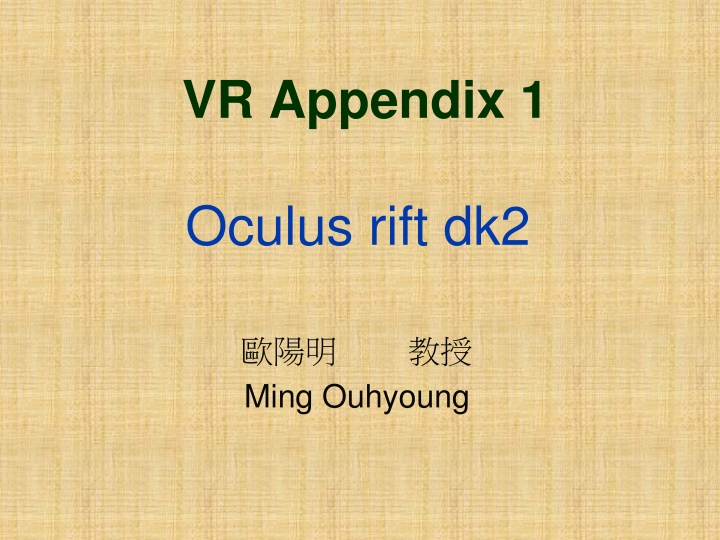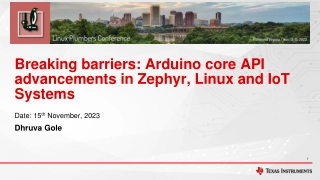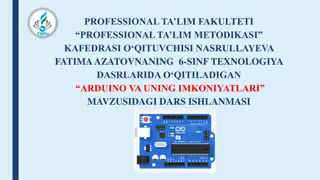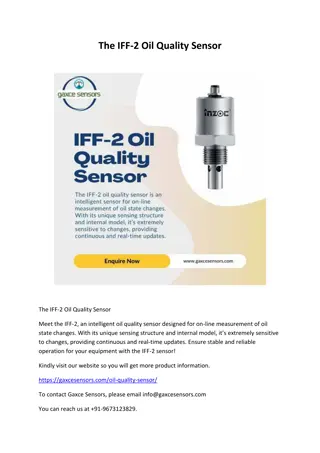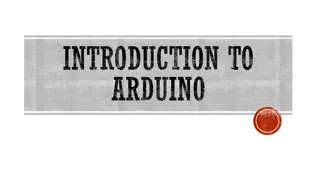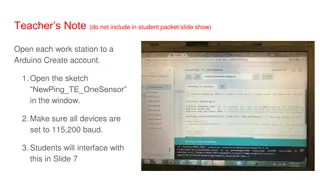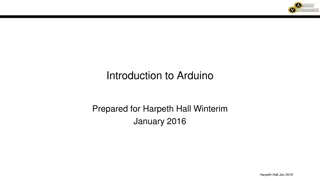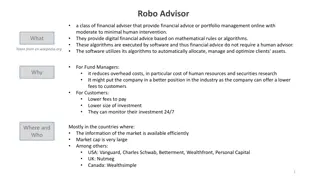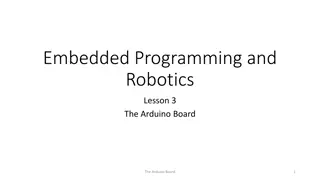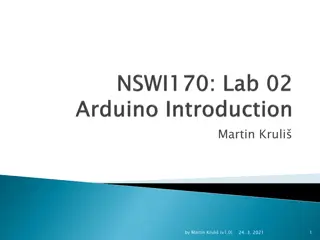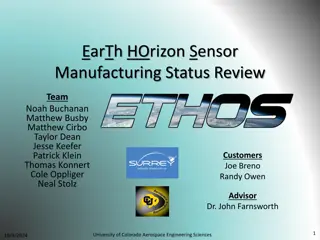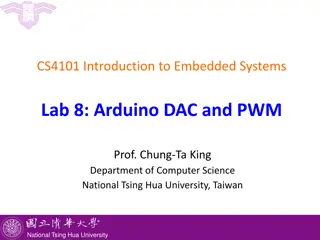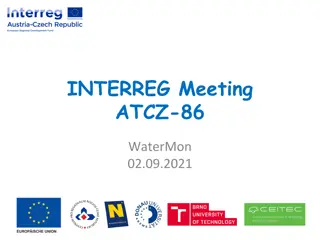Using Arduino for Sensor Input with Robo-RIO Integration
In this tutorial workshop, learn how to use an Arduino to read sensors and transmit data to a Robo-RIO system, enabling communication and interaction between devices. The process involves setting up the Arduino to communicate via DIO/AIO and Serial bus, writing code for both the Arduino and Robo-RIO to interact with sensor data, and handling potential connection issues. Detailed steps and code snippets are provided to guide you through the process of integrating Arduino for sensor input with Robo-RIO effectively.
Download Presentation

Please find below an Image/Link to download the presentation.
The content on the website is provided AS IS for your information and personal use only. It may not be sold, licensed, or shared on other websites without obtaining consent from the author.If you encounter any issues during the download, it is possible that the publisher has removed the file from their server.
You are allowed to download the files provided on this website for personal or commercial use, subject to the condition that they are used lawfully. All files are the property of their respective owners.
The content on the website is provided AS IS for your information and personal use only. It may not be sold, licensed, or shared on other websites without obtaining consent from the author.
E N D
Presentation Transcript
VR Appendix 1 Oculus rift dk2 Ming Ouhyoung
Specification 960 x 1080 per eye Resolution 100 Field of View (nominal) Viewing Optics Sensors: Gyroscope, Accelerometer, Magnetometer
Low Persistence OLED Display DK2 uses a low persistence OLED display to eliminate motion blur and judder, two of the biggest contributors to simulator sickness. Low persistence makes the scene appear visually stable, increasing the potential for presence.
Low Latency: Built-In Latency Tester Oculus has built a latency testing system into DK2. Real-time microsecond precision measurement of motion-to-photon latency lets you optimize your VR experience.
Outline: Will VR Meet Your goals ? Is VR the Appropriate Medium ? What Makes an Application a Good Candidiate for VR? Creating a VR Application. Adapting from other Media.
Will VR Meet Your goals ? Safety Marketing Cost savings Profit
Conveying ideas as artistic expression Improved ability to examine and explore 3D data Entertainment or escapism Improved quality of life
Is VR the Appropriate Medium? Moby Dick(or The Whale) Citizen Kane Directed by Orson Welles
What Makes an Application a Good Candidiate for VR? A key component of VR : real time interface. VR relies on a 3-D environment, tasks that are inherently 1-D or 2-D are not likely take advantage of VR. The imprecision and lag in current tracking methods, as well as relatively slow computation, makes tasks that require a very close registration with the real world a difficult targets.
Most VR devices are oriented toward visual and audio display. Because of this, there has been less work done for applications which use haptic display.
There are many problems for which the same benefits and problem solving capabilities of simulation can be extended to the medium of VR. Problems that cannot be tackled in the physical world. Problems that cannot be studied safely. Problems that cannot be experimented with due to cost constraints. Problems in What if? studies.
Creating a VR Application How ? Familiarize yourself with the medium of VR to the greatest extent feasible . VR experiences . VR hardware devices . You may derive your VR experience from three sources (1)another medium , (2) an existing VR application , (3) scratch .
Adapting from Other Media It often does not work to indiscriminately transfer content from old medium to VR: In transferring a book to a movie, a screenwriter adapts the narrative from the textual to the visual. VR is an inherently an interactive medium; therefore, the simple transference of content from sequential media makes little sense.
